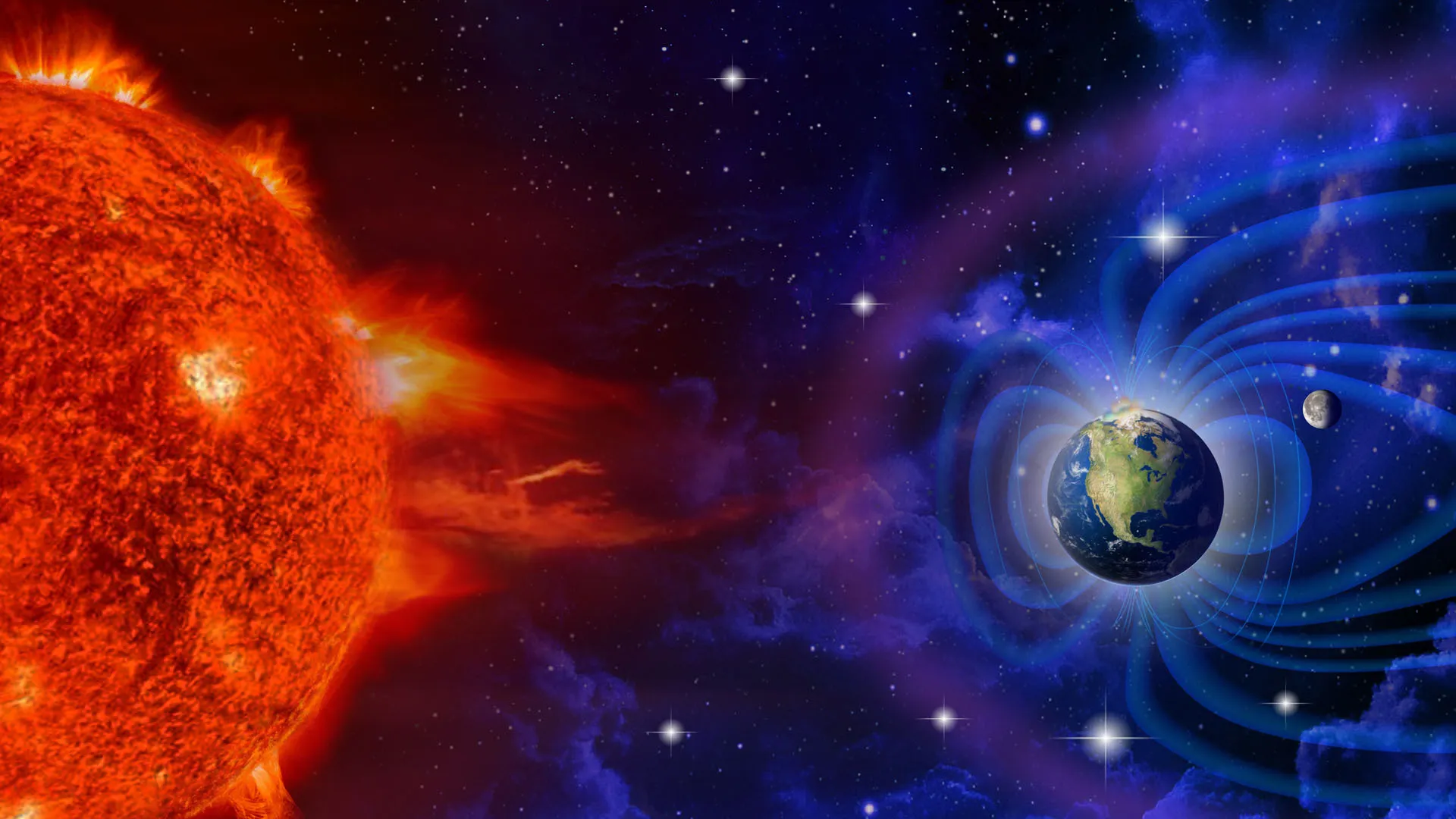What’s space weather?

Ever wondered about the weather in space? Before that, let's think about what dictates the weather on our planet. The Sun, which is our source of energy, plays a titular role in governing the weather on Earth. And so does it create the weather in space! The activities on the Sun's surface can lead to a type of weather in space and this is called space weather.
Space weather is dependent on activities and changes on the Sun's surface such as coronal mass ejections (eruptions of plasma and magnetic field structures) and solar flares (sudden bursts of radiation). We are shielded from these bursts of radiation and energy by Earth's magnetosphere, ionosphere, and atmosphere.
Impact of space weather
The Sun is some 93 million miles away from our Earth. Yet, space weather can affect us and the solar system. The electric power distribution grids, global satellite communication, and navigation systems are all susceptible to conditions in space that are impacted by the Sun.
Space weather can damage satellites, affect astronauts and even cause blackouts on Earth. Such incidents are rare but they have happened before.
CME, solar flare
When a CME reaches Earth, it leads to a geomagnetic storm. This can disrupt services, damage power grids and cause blackouts.
For instance, back in 1989, a powerful geomagnetic storm led to a major power blackout in Canada. As a result, around 6 million people were left in the dark for about 9 hours.
Solar flares can also result in disruption of services. The strongest and most intense geomagnetic storm ever recorded occurred in 1859. This was caused by a solar flare. Called the "Carrington Event and named after England's solar astronomer Richard Carrington who observed the activity through his telescope, the geomagnetic storm caused damage, disrupting the telegraph system on Earth. It also led to the aurorae, a result of geomagnetic activity, being visible in regions such as Cuba and Hawaii.
While telegraph networks are a thing of the past, our communications system and technologies can still be impacted by space weather. Even as most of the charged particles released by the Sun get shielded away due to Earth's magnetic field, sometimes space weather can affect us. We need to track the activities on the Sun's surface and understand them to protect the people and systems.
Any warning regarding bad space weather can help scientists send alerts and lessen the damage caused by it. Space agencies have observatories monitoring the Sun and detecting solar storms. These help in mitigating the effect of bad space weather.
Picture Credit :Google